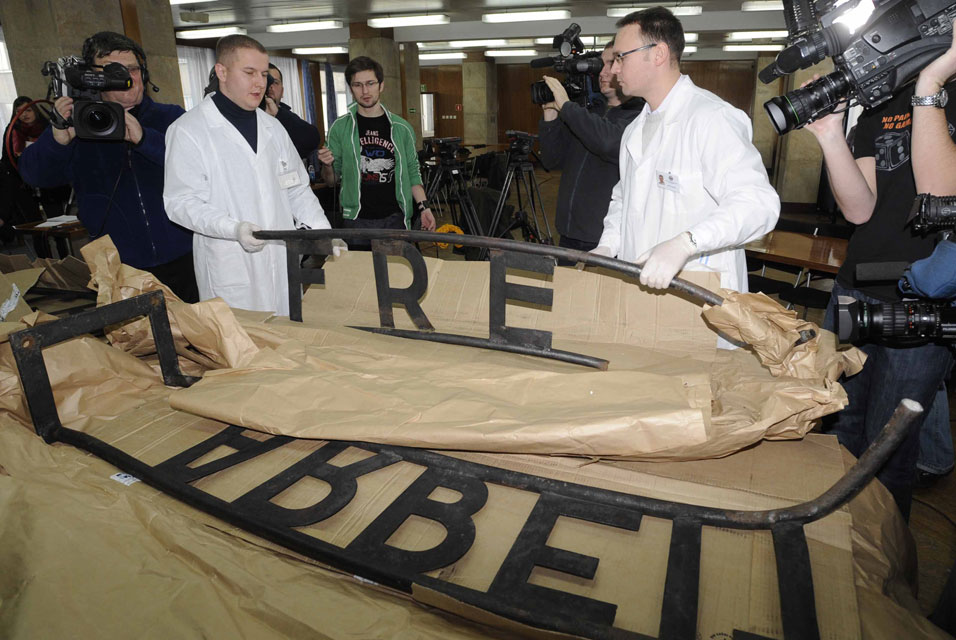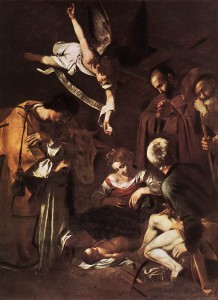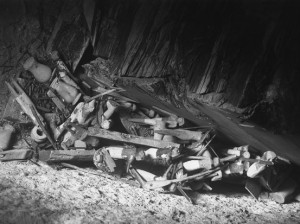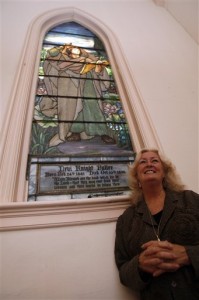You probably read about it the theft of the “Arbeit Macht Frei” sign at the entrance to Auschwitz. It was major news, of course, which is why I didn’t post about it because I figured y’all would have heard about it already. Now that the thieves have been captured and the backstory is coming out, I can’t let it go uncommented.
Just to lay it out clearly for those of you who haven’t seen the story, the infamous wrought iron sign at the entrance to Auschwitz was stolen in the wee hours of Friday morning. It caused a furor, needless to say, and Polish authorities went whole hog to get it back. They deployed a full force of police, roadblocks, security checks and airports and border crossings, sniffer dogs, a reward for information, the works.
Investigators found that the sign had been partially unscrewed and partially torn off the gate. The thieves then carried the 16-foor-long, 90-pound sign 300 yards to a gap in the concrete wall. The bars blocking the gap had been cut apart and footprints nearby indicated the thieves carried the sign to a waiting vehicle.
Finally, just before midnight on Monday, less than 72 hours after the theft, the Krakow police found the sign and arrested 5 men on suspicion of having stolen it. The sign was found in the home of one of the suspects outside of Czernikowo, a village 180 miles north of Auschwitz. It was cut into three pieces, one word per section, missing the “I” in “Frei” which the thieves were unable to remove from the gate.
Investigators are still questioning the suspects. They’ve brought three of them back to the scene of the crime to have them re-enact the theft to plug security holes. It turns out these rats actually stopped midway when they realized they didn’t have the proper tools for the job, left the camp, bought a spanner then came back to finish.
The theft was commissioned by a non-Pole. Prosecutors aren’t releasing any details about the commission, but media reports suggest the sign was heading to Sweden. Two of the suspects were apprehended in the port city of Gdynia, where ferries and container ships to Sweden depart.
None of the five men have known neo-Nazi ties, although they have criminal records including robbery and some violent crime. Four of the suspects are unemployed; one owns a small construction company. It was that last guy’s truck which was used to transport the sign.
The five suspects will likely be charged with “theft of a special cultural item” which could garner them as much as ten years in prison. The $40,000 reward provided by the Polish government and various donors will be divided among several people who provided information leading to the culprits’ capture. Interpol is involved now to follow the trail to whatever neo-Nazi collector scum commissioned this outrage.
The sign will be welded back together by conservators and put back in place in time for the 65th anniversary of the liberation of the camp by the Soviet Army on January 27th. Security will be drastically improved, one hopes, before they do that. Auschwitz is strapped for cash, unfortunately, and in desperate need of extensive conservation. Germany recently pledged $86 million to an endowment fund to help preserve the camp, but they need twice that to keep the camp from falling apart.




